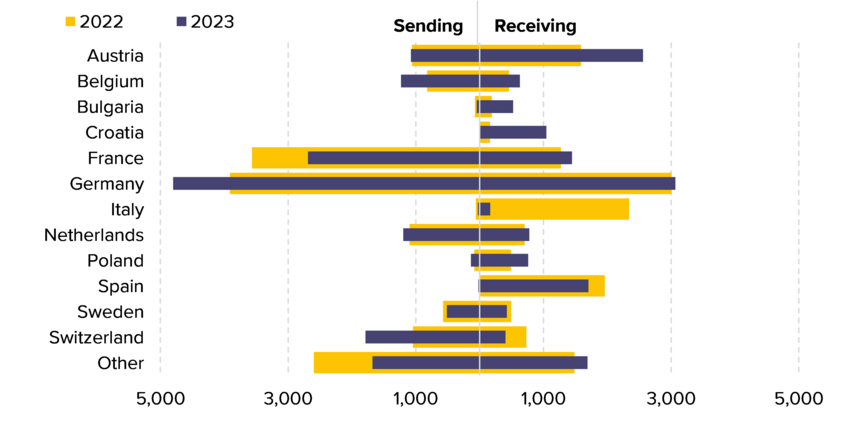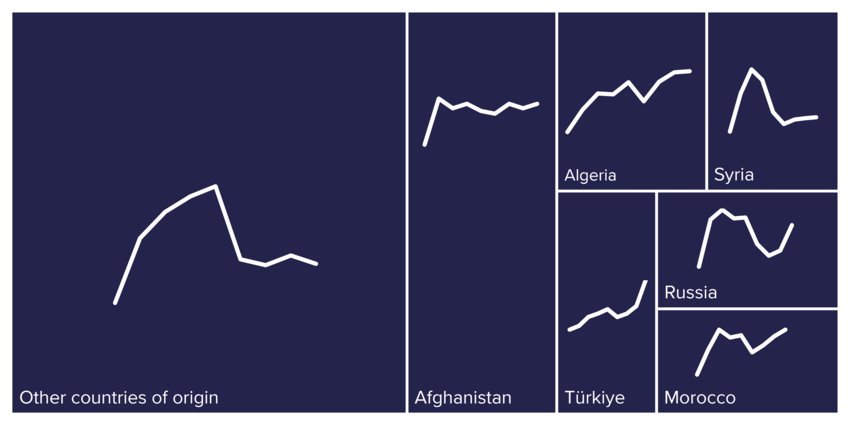3.2.6. Implementing Dublin transfers
In 2023, the number of implemented Dublin transfers (15,000) remained stable compared to 2022, but still well below pre-COVID-19 levels (over two-fifths fewer than in 2019).xxviiThe implementation of Dublin transfers was partially hampered by the increased strain on asylum and reception authorities caused by the sharp rise in irregular arrivals throughout the year.356
Nonetheless, several countries bound by the Dublin III Regulation implemented more transfers than in 2022 (see Figure 10, left panel), in fact reaching the highest levels in several years). For instance, Belgium, Cyprus and Slovakia carried out the most transfers on record,xxviiiwhereas Switzerland and Norway the most since 2016. The increase in Belgium and Switzerland was due to many more people transferred to Austria, Croatia, France and Germany. Conversely, transfers implemented by France declined to the lowest level in 6 years.
Belgium implemented the most transfers on record, while Austria and Croatia received the most transfers on record
Figure 10. Number of outgoing Dublin transfers implemented by sending (left) and receiving (right) country for selected countries, 2023 compared to 2022

Source: EUAA EPS data as of 1 February 2024.
On the receiving side (see Figure 10, right panel), transfers to Austria and, at lower levels, Croatia and Bulgaria rose to all-time highs, whereas those to Italy dropped markedly compared to 2022 (-93%) due to the temporary suspension of incoming Dublin transfers by several countries (see Section 3.2.5.3). Transfers to Switzerland (-44%) also declined.
In 2023, the transfer of Afghan applicants rose to the most since at least 2016, while those of Algerians and Turks reached an all-time high (see Figure 11). The main transfer corridor for Afghans and Turks was from Germany to Austria, whereas Algerians and, at lower levels, Moroccans were most frequently transferred from the Netherlands to Germany. There was also an increase in transfers of Russians (the most since 2019), largely from Germany to Poland. At the EU+ level, four-fifths of all transferees were men, and minors represented about one-eighth of the total.
All-time highs for the transfer of Algerians and Turks and long-term records for Afghans and Moroccans
Figure 11. Main countries of origin of Dublin transferees in 2023 and trendlines from 2015-2023

Source: EUAA EPS data as of 1 February 2024.
- xxviiData for 2023 were not available for Croatia and Denmark. Data were missing for Bulgaria for December 2023, for Czechia between March-December 2023, for Greece between July-December 2023, and for the Netherlands and Portugal for October, November and December 2023.
- 356European Border and Coast Guard Agency. (2024, January 26). Significant rise in irregular border crossings in 2023, highest since 2016.
- xxviiiAt least since 2016 based on available annual EUAA EPS data.

